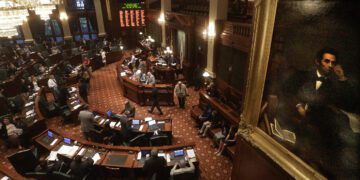What Florida gets right about using controlled burns to prevent damaging wildfires, and what California could learn from it. Tate Watkins writes:
The largest wildfire in New Mexico history was set by the federal government. In April, a prescribed burn carried out by the U.S. Forest Service escaped about four hours after being set. The fire was intended to reduce hazardous fuels and the risk of wildfire, but it became a conflagration that burned more than 340,000 acres.
The Forest Service made many mistakes during the out-of-control burn, including following outdated plans, lacking sufficient manpower and other resources, and failing to monitor weather adequately or anticipate rapidly changing wind and humidity. There is no excuse for such negligence. Fire ecologists and forestry experts agree, however, that the pace and scale of prescribed fire use are nowhere near sufficient to combat growing wildfire risk. The federal government must search for ways to get more "good" fire on the ground when and where it can be done safely, and traditions in Southeastern states, as well as recent Western examples, offer lessons in that respect.
Fire has been used to help manage land across North America for thousands of years. Native American tribes from the Atlantic to the Pacific set fires to cultivate new growth of vegetation, clear travel corridors, and manage wild game. Today, the federal government is one of many entities that use prescribed fires — low-intensity burns planned in advance and set deliberately. The goal of many burns, particularly in the arid West, is to methodically eliminate fuels from grasslands and forests before a wildfire does so with much greater speed, intensity, and destruction.
[Tate Watkins, "Fight Fire With Fire," Reason, July 21]








